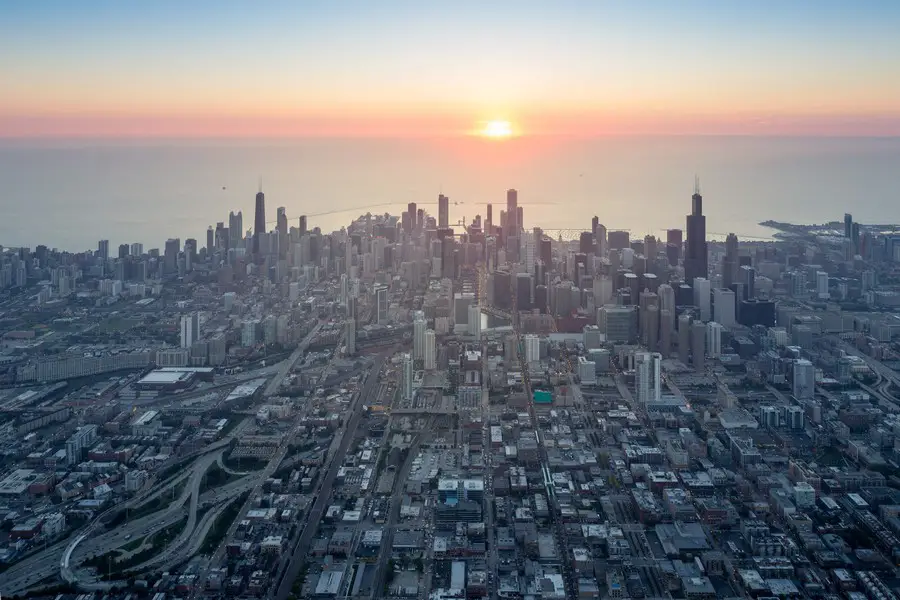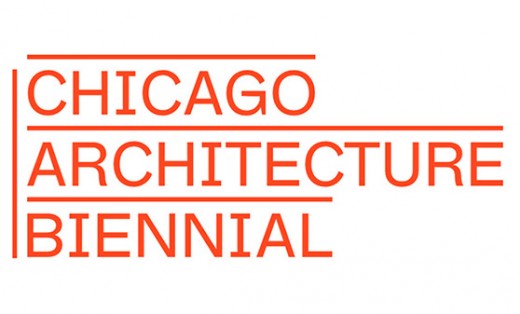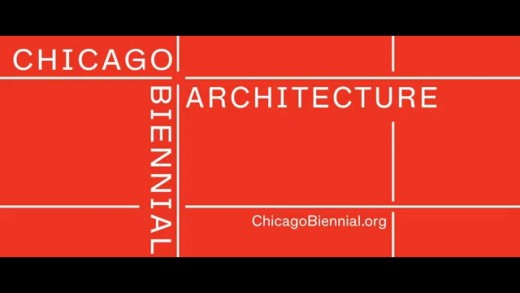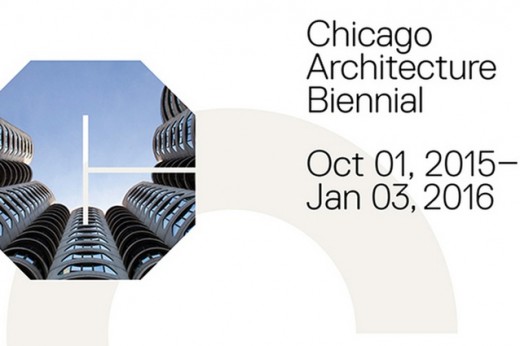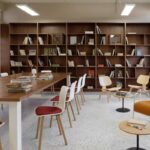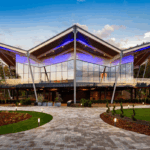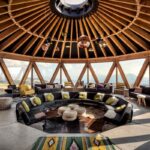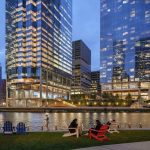Chicago Architecture Biennial 2015-2016, Building, Architects, American Architecture
Chicago Architecture Biennial
CAB: Illinois Architectural Design Event: International Cultural Exhibition USA
Jan 6, 2016
Chicago Architecture Biennial 2015-2016 News
Location: Chicago, Illinois, USA
Inaugural Chicago Architecture Biennial attracts over 1/2 million visitors in 2015
Based on “unequivocal” success, Biennial to return in the fall of 2017
January 6, 2016, Chicago, IL – The inaugural Chicago Architecture Biennial closed this past Sunday, January 3, amid strong public reception and critical acclaim.
A platform for groundbreaking architectural projects and spatial experiments that demonstrated how creativity and innovation can radically transform our lived experience, the inaugural edition of the global event featured 120 participating architecture and design offices contributing 93 projects from more than 30 countries.
The Biennial was unprecedented—the largest international exhibition of contemporary architecture ever to have taken place in North America. It was free and open to the general public at the Biennial’s hub, the Chicago Cultural Center, and at sites across the city and the region.
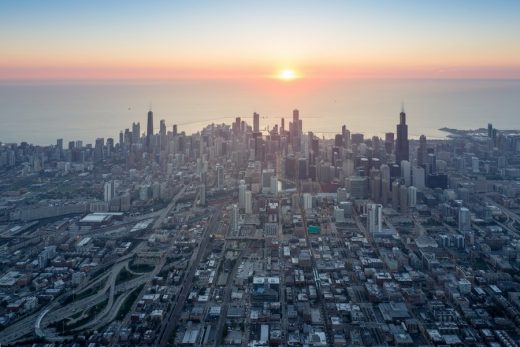
photograph : Iwan Baan, courtesy of Chicago Architecture Biennial
Through a constellation of exhibitions, full-scale installations, and a program of events, the Biennial invited the public to engage with and think about architecture in new and unexpected ways, and take part in a global discussion on the future of the field. From October 1, 2015, through January 3, 2016, the Biennial’s primary exhibition venues and programs were attended by 530,551 individuals (including visitors to the Chicago Cultural Center, Rebuild Foundation’s Stony Island Arts Bank, Graham Foundation, SC Johnson’s tours of the Frank Lloyd Wright–designed campus, and the lakefront kiosk pavilions on Chase Promenade in Millennium Park).
Additionally, 114 cultural and educational institutions across the city and region presented 313 partner programs and 67 partner exhibitions on the occasion of the 2015 Biennial. More than 10,000 students experienced the Chicago Architecture Biennial, who partnered with the Chicago Architecture Foundation to create a special program for K–12 students, including bilingual tours, a downloadable guide for children, and a teen ambassador program.
The Chicago Architecture Biennial was envisioned by Mayor Rahm Emanuel and was an outgrowth of the comprehensive cultural plan developed by the Department of Cultural Affairs and Special Events (DCASE) and its Commissioner, Michelle T. Boone.
The inaugural Biennial was presented under the leadership of Biennial Co-Artistic Directors Joseph Grima and Sarah Herda, who were supported by an advisory committee that comprised David Adjaye, Wiel Arets, Elizabeth Diller, Jeanne Gang, Frank Gehry, Sylvia Lavin, Hans Ulrich Obrist, Lord Peter Palumbo, Zoë Ryan, and Stanley Tigerman. On the heels of the success of the inaugural Chicago Architecture Biennial, the event’s return to Chicago has been confirmed for the fall of 2017. The official dates, leadership, and theme of the 2017 Chicago Architecture Biennial will be announced in the coming months.
“The first-ever Chicago Architecture Biennial was an unequivocal success, exceeding our expectations for attendance and bolstered Chicago’s reputation as the vanguard of architectural thinking on the national and international stage,” said Mayor Emanuel. “The City of Chicago is synonymous with architectural innovation, from the world’s first modern skyscrapers to the forefront of urban design, which is why Chicago was naturally suited to host an architectural event of this scale. I want to thank all of the architects, organizers, and residents of Chicago who participated in this event and made it such a tremendous success for our City.”
Co-Artistic Director of the Chicago Architecture Biennial and Director of Graham Foundation Sarah Herda added, “The success of the Biennial lies in the extraordinary connections it has produced at different scales—between architects and the public, between cultural institutions and educational initiatives, between Chicago and the world. The enthusiastic reception of the Biennial confirms that there is a far-reaching and overwhelming commitment to architecture and its possible futures.”
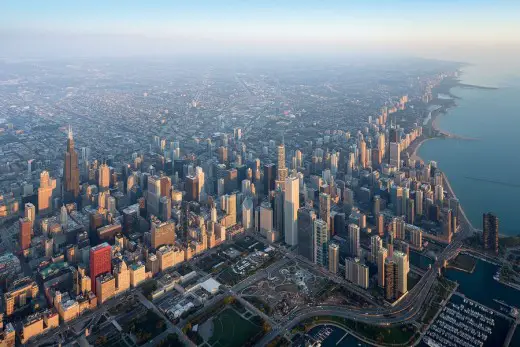
photograph : Iwan Baan, courtesy of Chicago Architecture Biennial
BP, the 2015 Chicago Architecture Biennial’s Presenting Partner, affirmed the success of the inaugural Biennial. “The Biennial’s overwhelming success is a testament to Chicagoans’ pride in their architecture and in this great city,” said John Mingé, Chairman and President of BP America. “BP and our 4,000 employees who call the Chicago area home have been honored to play a small role in bringing it to life.”
Participants, program partners, and supporters of the inaugural Chicago Architecture Biennial described their experiences with enthusiasm:
“Chicago was in many ways the birthplace of the modern city; the Biennial ensures that the city continues to be a leader in the kind of architectural innovation that is instrumental in preparing the urban landscape for the challenges and possibilities of the future.”
—David Adjaye, Principal, Adjaye Associates and Chicago Architecture Biennial Advisory Committee Member
“The Biennial is a platform for innovative architectural interventions that directly impact the city and the profession, reaching far beyond the exhibition space. The invited firms, the students, and the public enrich the dialogue with new ways to think about spaces and cities, and Chicago, with its architectural history, is the perfect place for this discussion. This year was the start of an enduring and very promising stage for creation and exchange.”
—Tatiana Bilbao, Chicago Architecture Biennial Participant
“The inaugural Chicago Architecture Biennial was a great success, thanks to the vision and broad support from a host of civic and cultural leaders from Chicago and beyond, the dynamic participants, cultural partners, sponsors—and, of course, the many, many attendees from across the globe. The Biennial was a one-of-a-kind opportunity for both seasoned professionals and everyday citizens to enjoy, discuss, examine, and experience design that impacts the world in which we live.”
—Michelle T. Boone, Commissioner, Chicago Department of Cultural Affairs and Special Events
“The MCA was thrilled to partner with and present three projects in conjunction with the inaugural Chicago Architecture Biennial. The audience and dialogue created by the Biennial were both extremely sophisticated and diverse, and it was exciting to see the eyes of the architectural world on Chicago. On the whole, the programming was very ambitious and of the highest quality, which certainly bodes well for a follow-up in 2017, when we expect even more visitors and international recognition.”
—Michael Darling, James W. Alsdorf Chief Curator, Museum of Contemporary Art Chicago (MCA) and Chicago Architecture Biennial Program Partner
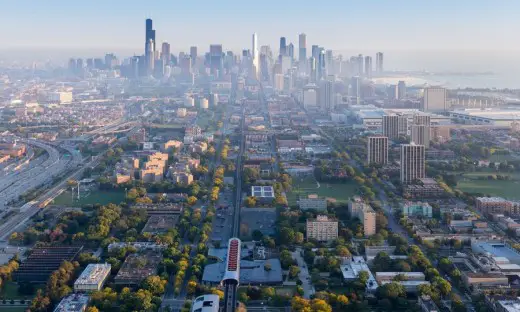
photo : Iwan Baan, courtesy of Chicago Architecture Biennial
“Design evolves, but today, the ways of producing and practicing design are also changing to address the issues and challenges of our time. The inaugural Chicago Architecture Biennial offered a broad reflection of the ways architects are working to meet these challenges. I was pleased to see how the show illuminated these many dimensions of architecture, not only for designers but for everyone.”
—Jeanne Gang, Founder and Principal, Studio Gang, Chicago Architecture Biennial Participant, and Chicago Architecture Biennial International Advisory Committee Member
“Architecture today is at a confused moment. What architecture needs is to be rekindled by the other arts—to be inspired by poetry, music, dance. The merging with those arts can be very productive and inventive, and for me, this has been a very important collaboration, made possible by the Chicago Architecture Biennial.”
—Steven Holl, Principal, Steven Holl Architects and Chicago Architecture Biennial Participant
“Opening the Stony Island Arts Bank as part of the Chicago Architecture Biennial was an amazing opportunity for Rebuild Foundation. Early on we were all excited about the breadth of the exhibition and thrilled to be part of the program, and we were confident in its success, but we could not have anticipated how energizing it was for South Siders and for visitors who might not have otherwise traveled south of the Loop.”
—Ken Stewart, Chief Executive Officer, Rebuild Foundation and Chicago Architecture Biennial Program Partner
“Winning the Lakefront Kiosk Competition and working with CAB and Chicago Park District through the summer to realize the project over the course of two weeks in September was an amazing experience. We were continually impressed with the commitment to fostering good architecture every step of the way. There is no question that the construction of the kiosk has had an incomparable effect on our own work and careers, but our hope is that the Biennial’s ambitious approach is contagious and will inspire other cities and institutions to follow suit and find new ways to bring architecture to the city at every scale.”
—Ultramoderne, Winner of the BP Prize/Lakefront Kiosk Design Competition
“In its first time out of the gate, the Chicago Architecture Biennial was ambitious and courageous. It had big shoes to fill on the subjects of architecture and Chicago, but at the same time, it had no Biennial how-to guide to follow.
“When the committee approached me about participating I had no idea what to expect for such an ambitious undertaking. My aim was to make sure I presented a project that engaged multiple audiences in which I’m invested: both the global community of makers and thinkers as well as the many Chicagoans who think architecture only happens between Roosevelt and North Avenue. Recent events in Chicago, Paris, Syria, Kenya, etc., show us just how relevant the myriad Biennial conversations that took place about the built environment truly are.
“What I’ve learned from this experience, and the potential of the work I’m producing, is that asking and presenting architecture’s uncomfortable questions in an artful and nuanced way can be just as impactful and resonant as positing beautifully rendered but disengaged utopian solutions.”
—Amanda Williams, Chicago Architecture Biennial Participant
About the Chicago Architecture Biennial
The Chicago Architecture Biennial, which took place October 3, 2015, through January 3, 2016, provided a platform for groundbreaking architectural projects and spatial experiments that demonstrate how creativity and innovation can radically transform our lived experience. Through a constellation of exhibitions, full-scale installations, and a program of events, the Biennial invited the public to engage with and think about architecture in new and unexpected ways, and to take part in a global discussion on the future of the field.
2015 Title: The State of the Art of Architecture
The inaugural Chicago Architecture Biennial took its title, “The State of the Art of Architecture,” from a 1977 conference organized by Chicago architect Stanley Tigerman, which invited leading American designers to Chicago to discuss the current state of the field. The 2015 Chicago Architecture Biennial expanded the spirit and scope of this event. It invited both emerging and established practices from across the world to Chicago to demonstrate how advances in architectural design are tackling the most pressing issues of today.
Lakefront Kiosk Competition and the BP Prize
The shoreline of Lake Michigan has always played a central role in Chicago’s urban identity. Today, the lakefront is a celebrated and heavily used public space, a major destination for both visitors and local residents. It features over 20 miles of public parks and beaches, as well as pedestrian and cycling routes.
The Chicago Park District currently oversees more than 40 kiosks that punctuate the shoreline. During the summer, the kiosks offer food, retail, and recreational services.
As part of a broader initiative to enhance the lakefront, the Chicago Architecture Biennial unveiled four new kiosks. One kiosk was selected through an international competition, which received 421 submissions from more than 40 countries. In addition to the kiosk competition, the Biennial organizers selected an international team of architects who worked with Chicago-based schools of architecture to design three additional kiosks. The Illinois Institute of Technology (IIT) collaborated with Pezo von Ellrichshausen, an art and architecture studio based in Concepción, Chile; the School of the Art Institute of Chicago (SAIC) collaborated with NLÉ, led by Kunlé Adeyemi, an architect, designer, and urbanist working between Amsterdam, Netherlands, and Lagos, Nigeria; and the University of Illinois at Chicago (UIC) collaborated with Paul Andersen, of Denver-based Indie Architecture, and Paul Preissner, principal of Chicago-based Paul Preissner Architects.
Rhode Island–based design firm Ultramoderne was the winner of the design competition and the recipient of the BP Prize. Ultramoderne’s kiosk, Chicago Horizon, is located near the Shedd Aquarium on Museum Campus. Two of the school kiosks can be found in Millennium Park on the Chase Promenade: the UIC kiosk, Summer Vault, and a representation of the SAIC kiosk design, Rock. The IIT kiosk, The Cent Pavilion, was on display on the IIT campus during the Biennial. All three of these kiosks will be sited along the lakefront later this year.
Educational Partnership through the Chicago Architecture Foundation
The Chicago Architecture Foundation (CAF) spearheaded educational opportunities for students from Chicago Public Schools and offered special tours, exhibitions, and lectures throughout the Biennial. With this constellation of programs, CAF introduced Chicago youth to both current architectural trends and the city’s rich architectural history through a variety of channels that appealed to visitors of all ages and levels of interest. Through a suite of educator guides, teen design competitions, hands-on field trips, and family programs, CAF ensured that students who might otherwise not be exposed to architecture and design had access to the Chicago Architecture Biennial’s exhibitions and installations. CAF played a crucial role in helping the Biennial fulfill its mission of exploring the ambitions, challenges, and possibilities that are fueling the architectural imagination today.
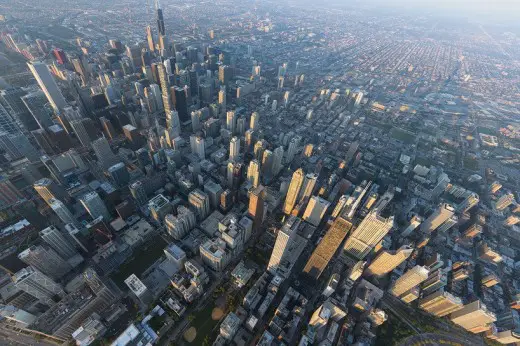
photo : Iwan Baan, courtesy of Chicago Architecture Biennial
SUPPORTERS
Presenting Partners: Mayor Rahm Emanuel, City of Chicago; City of Chicago, Department of Cultural Affairs and Special Events; and Graham Foundation for Advanced Studies in the Fine Arts
Presenting Sponsor: BP
Regional Sponsor: SC Johnson
Exhibition Sponsors: Bank of America, Jones Lang LaSalle, and Tanya and Michael Polsky
Education Sponsor: J. Thomas Hurvis, Chairman and Founder, Old World Industries/PEAK
Official Hotel Sponsor: Marriott
Community Outreach Sponsor: ArcelorMittal
Signature Sponsors: American Institute of Architects and Chicago Architecture Foundation
Supporters: Pritzker Foundation, Alphawood Foundation, Driehaus Foundation, Mansueto Foundation, Joyce Foundation, Tawani Foundation, Joy Foundation
Sponsors: John and Kathleen Buck, Sterling Bay, Related Midwest, Magellan Development Group, Hines: River Point, Wolf Point West, and Lincoln Common, Skidmore, Owings, & Merrill LLP, Shawn Donnelley, Behr, Clayco, Herman Miller, Nordic Structures, Paschen, reThink Wood, Remont, Revel Global Events, Rhode Island School of Design, Taft Stettinius & Hollister LLP, Thornton Tomasetti, Christy Webber Landscapes, Atlas Translation Services, Chicago
International Supporters: Australian Consulate-General Chicago, French-American Curatorial Exchange Program, Consulate-General of the Netherlands, and Pro Helvetia
MEDIA PARTNERS
BBC.com is Presenting Media Partner of the 2015 Chicago Architecture Biennial. Additional media support is provided by Architect Magazine; the Architect’s Newspaper; Architectural Record; Design Indaba; Dezeen; Icon; Metropolis; onoffice; and Pin-Up
BIENNIAL PROGRAM PARTNERS
American Institute of Architects, Chicago
The Art Institute of Chicago
Chicago Architecture Foundation
Chicago International Film Festival
Chicago Park District
Chicago Public Library
Chicago Public Schools
Choose Chicago
Harris Theater for Music and Dance
Illinois Institute of Technology, College of Architecture
Millennium Park Foundation
Museum of Contemporary Art Chicago
Rebuild Foundation
The School of the Art Institute of Chicago
University of Chicago
University of Illinois at Chicago, School of Architecture
AFFILIATE PROGRAM PARTNERS
6018North
A+D Gallery
Aggregate Architectural History Collaborative
Alliance Francaise
ArchAgenda
Archeworks
Architectural Association, School of Architecture
Architecture for Humanity, Chicago
Art Institute of Chicago, Architecture and Design Society
Arts Club of Chicago
Association of Architecture Organizations
Ballroom Projects
Benjamin Marshall Society
British Council
Canadian Centre for Architecture
The Center for Urban Pedagogy
The Chair of Complex Projects, TU Delft
Chicago Architectural Club
Chicago Artists Month
Chicago Design Museum
Chicago History Museum
Chicago Humanities Festival
Chicago Ideas Week
Chicago Women in Architecture
Clarke House Museum
Columbia College Chicago
Columbia University
Comfort Station
Council on Tall Buildings and Urban Habitat
Defibrillator Gallery
DePaul Art Museum
DePaul University
Design Evanston
DuSable Museum of African American History
Elmhurst Art Museum
Experimental Sound Studio
Expo Chicago
Farnsworth House
The Franklin
Frank Lloyd Wright Trust
French-American Curatorial Exchange Program
Friends of Downtown
Friends of Historic Second Church
Gallery 400
Garfield Park Conservatory
Glass Curtain Gallery
Glessner House Museum
Global Architectural History Teaching Collaborative
Goethe-Institut
Great Cities Institute
Harvard University, Graduate School of Design
Hyde Park Art Center
IFP/Chicago
Chicago buildings:
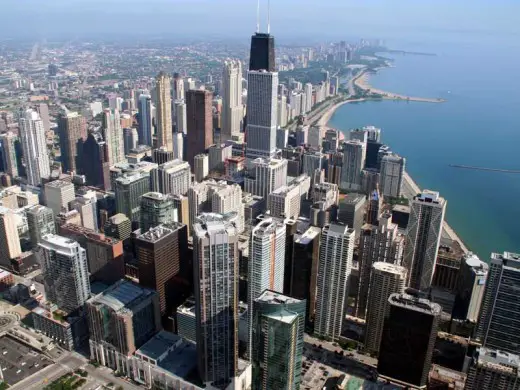
photograph courtesy of Jan Klerks
Chicago Architecture Biennial 2017
Location: Southside, Chicago, Illinois, USA
Architecture in Chicago
Contemporary Chicago Architectural Projects
Chicago Architectural Design – chronological list
Chicago Architecture Tours – city walks by e-architect
Obama Presidential Center Building in Chicago
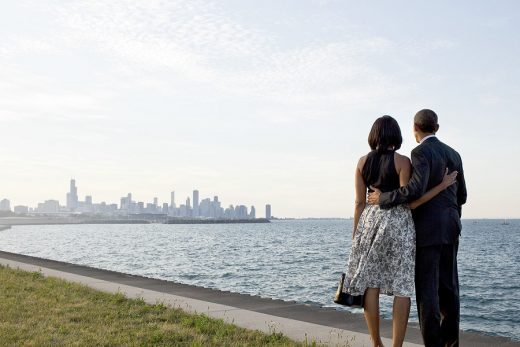
Official White House photo : Pete Souza
Chicago architecture:
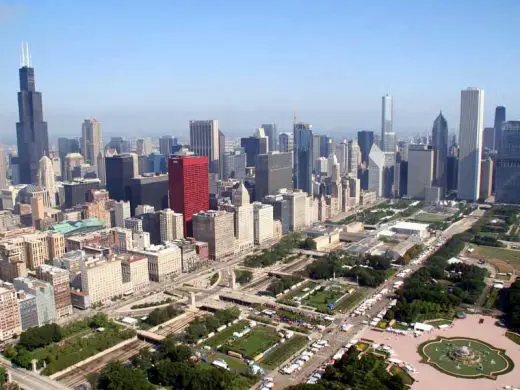
photo courtesy of Jan Klerks
Major Chicago Buildings
Trump International Hotel Tower
Comments / photos for the Chicago Architecture Biennial 2015-2016 – page welcome

